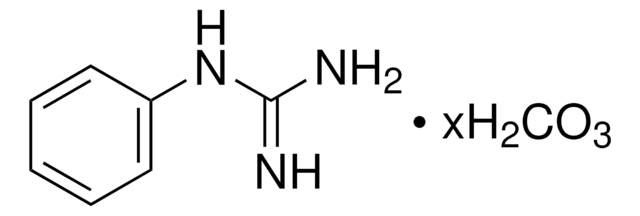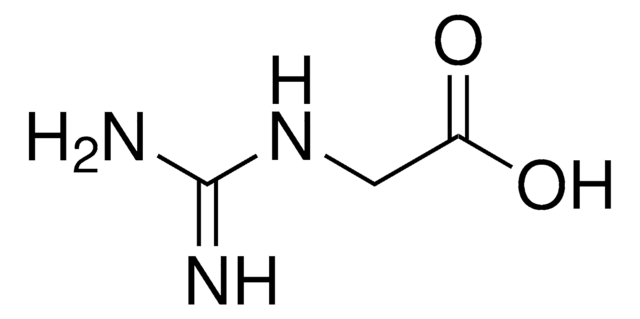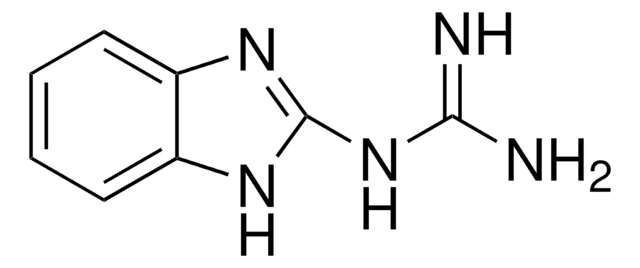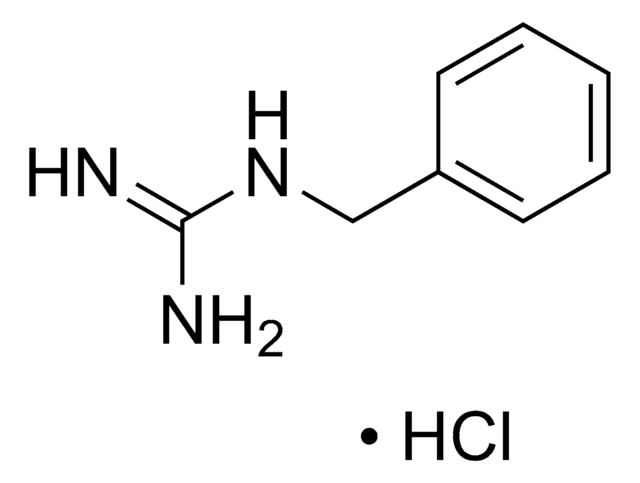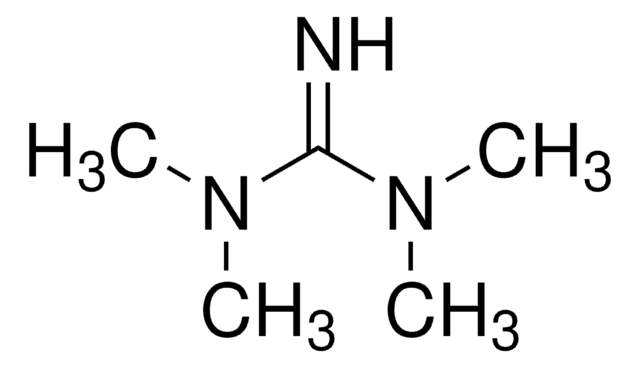222402
Methylguanidine hydrochloride
98%
About This Item
Produits recommandés
Niveau de qualité
Essai
98%
Forme
solid
Solubilité
water: soluble 50 mg/mL, clear
Groupe fonctionnel
amine
Chaîne SMILES
Cl.CNC(N)=N
InChI
1S/C2H7N3.ClH/c1-5-2(3)4;/h1H3,(H4,3,4,5);1H
Clé InChI
VJQCNCOGZPSOQZ-UHFFFAOYSA-N
Vous recherchez des produits similaires ? Visite Guide de comparaison des produits
Catégories apparentées
Application
- Biaryl derivatives as BACE1 inhibitors.
- Modified xylose, which is used in the synthesis of biodegradable composite hydrogels.
- Methylguanidinium borohydride ionic liquid, which is applicable as a hydrogen storage material.
Mention d'avertissement
Warning
Mentions de danger
Conseils de prudence
Classification des risques
Acute Tox. 4 Oral - Eye Irrit. 2 - Skin Irrit. 2
Code de la classe de stockage
11 - Combustible Solids
Classe de danger pour l'eau (WGK)
WGK 3
Point d'éclair (°F)
Not applicable
Point d'éclair (°C)
Not applicable
Équipement de protection individuelle
dust mask type N95 (US), Eyeshields, Gloves
Faites votre choix parmi les versions les plus récentes :
Déjà en possession de ce produit ?
Retrouvez la documentation relative aux produits que vous avez récemment achetés dans la Bibliothèque de documents.
Les clients ont également consulté
Notre équipe de scientifiques dispose d'une expérience dans tous les secteurs de la recherche, notamment en sciences de la vie, science des matériaux, synthèse chimique, chromatographie, analyse et dans de nombreux autres domaines..
Contacter notre Service technique